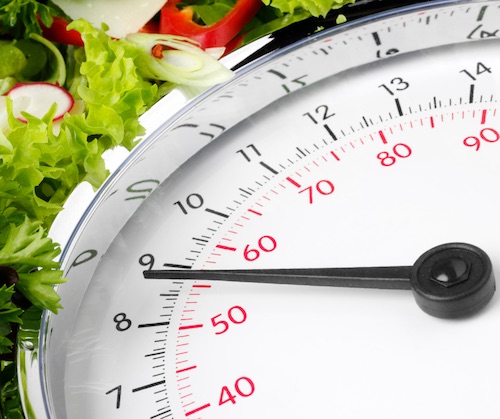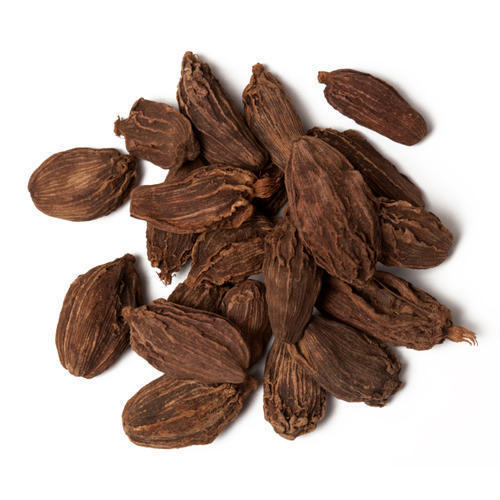Excess body weight has become a significant health concern worldwide, with its prevalence steadily rising over the past few decades. This surge in unhealthy weight gain can be attributed to a combination of factors, such as sedentary lifestyles, increased consumption of high-calorie, low-nutrient foods, and genetic predispositions. Alongside its alarming spread comes an array of associated health complications. Heart disease, type 2 diabetes, stroke, and certain types of cancer are just a few of the serious conditions that can arise from carrying excessive weight. Moreover, the strain on joints can lead to musculoskeletal disorders like osteoarthritis. Beyond physical complications, psychological ramifications, including depression and reduced self-esteem, often surface. Addressing this epidemic requires multidimensional approaches, emphasizing not just individual responsibility but also societal, environmental, and policy-level interventions.
Table of content
Ayurvedic Treatment for Obesity or Weight Loss
- Ayurvedic herbs that may help in weight loss
- Kapha and Pitta Balancing diet for weight management
- Ayurvedic Home remedies for obesity
- Important exercises and yoga postures to shred extra pounds
- Dinacharya or daily routine that helps to lose weight
Obesity in Ayurveda
In Ayurveda, an ancient system of medicine rooted in India, excess body weight is often referred to as “Sthaulya.” It is not viewed merely in terms of excessive fat or body mass index but as an imbalance in one’s life energies or doshas. There are three primary doshas: Vata, Pitta, and Kapha. Each represents a unique combination of elements and governs specific physiological functions in the body.
Sthaulya primarily stems from an aggravated Kapha dosha. Kapha, composed of earth and water elements, is responsible for bodily cohesion, lubrication, and structure. When it’s in excess, qualities like heaviness, slowness, and increased fluid retention manifest. Consuming foods that are sweet, oily, or cold, or leading a sedentary lifestyle, can exacerbate this imbalance.
From this perspective, obesity results from an accumulation of Ama (toxins) and excessive nourishment of Meda Dhatu (fat tissue), leading to blocked channels and reduced metabolic fire, or “Agni.” The treatment approach in Ayurveda, therefore, is holistic, focusing on dietary and lifestyle changes tailored to pacify the Kapha dosha, strengthen Agni, and eliminate Ama. This entails incorporating warm, light, and dry foods, coupled with active routines and specific herbal remedies to restore balance and harmony in the body.
Ayurvedic Treatment for Obesity or Weight Loss
Ayurveda, an ancient system of medicine originating from India, offers holistic remedies to tackle excessive weight and foster well-being. According to its principles, an imbalance of the three vital energies (doshas) can contribute to weight gain. To restore balance, Ayurveda recommends specific diets, herbal supplements, and lifestyle changes tailored to one’s constitution or prakriti. Panchakarma, a detoxifying process, helps eliminate toxins and rejuvenate the body. Regular practices like yoga and meditation complement these treatments, promoting mental clarity and discipline. When integrated consistently, Ayurvedic strategies not only aid in shedding excess pounds but also ensure overall health and vitality.
Panchakarma therapy
Panchakarma therapy, deeply rooted in the ancient Ayurvedic system of medicine, is a detoxifying regimen that purifies and rejuvenates the body, mind, and spirit. The process involves five primary therapies aimed at eradicating toxins and restoring equilibrium to the body’s physiological functions. Central to Ayurvedic thought is the concept of the three doshas – Vata, Pitta, and Kapha – which represent unique combinations of the five elemental forces of nature. When there’s a dosha imbalance, ailments manifest, and the body loses its harmony.
In the context of excessive body weight, it is believed that an accumulation and imbalance of the Kapha dosha are primary culprits. Kapha embodies the earth and water elements, which are responsible for the cohesion and structure in our bodies. An aggravated Kapha leads to sluggish metabolism, fluid retention, and excessive fat deposition – factors contributing to weight gain.
Panchakarma therapy addresses this dosha imbalance in several ways:
Deepana and Pachana:
These are pre-therapeutic measures which involve the ingestion of specific Ayurvedic formulations to stimulate digestion and metabolism, aiding in the correction of the digestive fire (Agni) and preparing the body for detoxification.
Vamana:
A therapeutic emesis or controlled vomiting procedure, which is especially beneficial for Kapha imbalances. This treatment removes toxins and excessive Kapha from the body, paving the way for improved metabolism.
Virechana:
This therapeutic purgation procedure removes toxic waste from the intestines and reestablishes Pitta balance, indirectly aiding in Kapha regulation.
Basti:
Herbal enema therapy, which primarily balances Vata but also has implications for both Pitta and Kapha, ensuring the smooth functioning of digestive and eliminatory systems.
External Therapies:
These may include Udwarthanam, a special type of dry massage using herbal powders, which is particularly beneficial for breaking down fat tissue and stimulating circulation.
In essence, Panchakarma therapy offers a comprehensive approach to rectifying imbalances that contribute to weight gain. By addressing the root cause – the dosha imbalance – rather than just the symptom (excessive weight), it offers a holistic path to well-being, beyond merely tackling obesity.
Ayurvedic herbs that may help in weight loss
Texts of recommend various herbs and herbal combinations to balance doshas so that , the weight loss occurs in a healthy way. Here is the list of few weight loss herbs that help in management of obesity.
Triphala:
A potent combination of three fruits – Amalaki, Bibhitaki, and Haritaki, Triphala acts as a natural laxative, promoting digestion and aiding in detoxification. It is believed to balance all three doshas, and its regular consumption can support a healthy metabolic rate.
Guggul :
Derived from the resin of the Commiphora Mukul tree, Guggul has been traditionally used to combat high cholesterol. This herb plays a significant role in fat metabolism, making it a valuable ally for those striving to shed some pounds.
Garcinia Cambogia:
Garcinia Cambogia also known as Vrukshamla is Recognized for its hydroxycitric acid content, this fruit assists in reducing fat accumulation within the body. It also promotes satiety, helping reduce overeating.
Cinnamon:
Beyond its aromatic appeal, cinnamon supports better digestion and aids in stabilizing blood sugar levels, thereby helping to control appetite.
Fenugreek:
Methi or Fenugreek is known to regulate blood sugar levels. By slowing down stomach emptying and reducing insulin resistance, fenugreek seeds can help in achieving a satiated feeling, promoting better food intake control.
Turmeric:
Curcumin, the active compound in turmeric, has anti-inflammatory properties. Inflammation can be a cause of dosha imbalance, which may lead to unwanted weight gain. By combating inflammation, turmeric can play a role in supporting healthier body weight.
Aloe Vera:
A versatile plant, Aloe Vera not only detoxifies the body but also boosts metabolism, contributing to effective weight management.
A successful journey toward a healthier body, as per Ayurveda, doesn’t solely rely on herbs. It’s equally crucial to understand one’s unique constitution, make necessary lifestyle changes, and ensure a diet that aligns with one’s dosha balance. By integrating these ancient wisdoms with modern practices, achieving and maintaining optimal body weight becomes a more attainable goal.
Kapha and Pitta Balancing diet for weight management
In Ayurveda, health and well-being are maintained by balancing the three doshas: Vata, Pitta, and Kapha. These doshas represent different combinations of the five basic elements: space, air, fire, water, and earth. An imbalance in these doshas can lead to various health issues, including unwanted weight gain.
Kapha dosha is characterized by earth and water elements, and when out of balance, it can manifest as sluggishness, lethargy, and a tendency to gain weight. A Kapha-balancing diet emphasizes light, warm, and dry foods to counteract the inherent coolness and heaviness of Kapha. Favoring bitter, astringent, and pungent flavors can be beneficial. Examples include leafy greens, lentils, and spices like turmeric and ginger. It’s also crucial to limit cold, oily, and sweet foods which can further aggravate Kapha, such as dairy products, fried foods, and sugary treats.
Pitta, on the other hand, is governed by fire and water. A Pitta imbalance can lead to inflammation, acidity, and irritability. While not directly linked to weight gain, an imbalanced Pitta can disrupt digestion and metabolism. To bring Pitta into harmony, it’s recommended to consume cooling, fresh, and mildly spiced foods. Cucumbers, melons, and dairy products like milk and ghee can be soothing for Pitta. Spicy, fermented, and acidic foods, which can aggravate Pitta, should be minimized.
For those who have both Kapha and Pitta imbalances, a combined approach is needed. Consuming a diet that is fresh, slightly dry, moderately warm, and lightly spiced can be beneficial. Regular meals, without excessive snacking, and incorporating physical activity into daily routines can further aid in achieving weight loss. Remember, Ayurveda emphasizes not just the type of food, but also how it’s consumed. Eating mindfully, in a calm environment, and paying attention to one’s hunger signals are all essential components of achieving balance and desired weight loss goals.
Ayurvedic Home remedies for obesity
When addressing excessive weight gain, Ayurveda emphasizes balancing the body’s doshas – Vata, Pitta, and Kapha – through dietary and lifestyle choices. Here are few ayurvedic home remedies that help to balance doshas and aid in weight loss
Triphala Tea:
A traditional blend of three fruits – Amalaki (Emblica officinalis), Bibhitaki (Terminalia belerica), and Haritaki (Terminalia chebula), is hailed for its detoxifying properties. Regularly consuming Triphala tea or powder can aid in digestion and eliminate toxins, supporting healthy metabolism. Triphal tea is one among best herbal teas for weight loss.
Honey and Lemon:
Starting the day with a warm glass of water mixed with a teaspoon of honey and a squeeze of fresh lemon juice is a well-regarded Ayurvedic practice. This blend helps in kickstarting the metabolism and promoting internal cleansing.
Cinnamon:
This aromatic spice is known for balancing blood sugar levels. Incorporating cinnamon into daily meals or consuming it as a tea can assist in curbing unhealthy cravings and regulate energy levels.
Guggul:
Derived from the resin of the Commiphora mukul tree, Guggul has been historically recommended for managing cholesterol and catalyzing the fat-burning process.
Aloe Vera:
Among weight loss juice recipes, fresh aloe vera juice is best. Consuming fresh aloe vera juice promotes effective digestion and cleanses the system, setting the stage for efficient caloric utilization.
Ginger:
A potent digestive aid, ginger boosts metabolism and assists in the breakdown of fatty foods. A warm cup of ginger tea can work wonders for digestive health and overall metabolic vitality.
Turmeric:
Curcumin, the active component in turmeric, holds anti-inflammatory properties. Regularly consuming turmeric can mitigate inflammation in the body, which is often associated with excessive weight gain.
Physical Activity:
Ayurveda underscores the importance of a consistent physical routine. Incorporating yoga, especially poses like Surya Namaskar (Sun Salutation), can be immensely beneficial for shedding excess weight.
Incorporating these remedies, while maintaining a balanced diet and consistent physical activity, can assist in achieving and maintaining a healthy weight. However, before beginning any home remedies or making substantial changes to one’s routine, it’s prudent to consult with an Ayurvedic practitioner or healthcare professional.
Important exercises and yoga postures to shred extra pounds
Exercising regularly and incorporating yoga can be a potent combination when aiming to shed unwanted pounds. Both provide holistic benefits, enhancing physical, mental, and emotional well-being.
Strength Training:
Building muscle through resistance and strength training is essential. Muscle tissue (mamsa dhatu) burns more calories at rest compared to fat tissue. Hence, having a higher muscle mass increases your resting metabolic rate. Exercises like squats, lunges, push-ups, and deadlifts are fundamental.
Cardiovascular Exercises:
Aerobic activities improve heart health and burn a significant number of calories. Running, brisk walking, cycling, and jumping rope are great choices. High-Intensity Interval Training (HIIT) combines short bursts of intense exercise followed by recovery periods, proven to be effective for rapid fat burning.
Yoga for Toning:
While yoga is often viewed primarily for relaxation and flexibility, certain postures engage multiple muscle groups, promoting strength and endurance.
Plank Pose (Phalakasana):
This pose strengthens the core, shoulders, and arms.
Boat Pose (Navasana):
Primarily a core-strengthening pose, it also works the legs and lower back.
Warrior Pose (Virabhadrasana): A series of postures that tone the legs, arms, and lower back while enhancing stamina.
Flexibility and Stretching:
Maintaining flexibility ensures a full range of motion, which aids in performing exercises correctly and avoiding injuries. Post-workout stretches and yoga postures like the Forward Bend (Uttanasana) and Downward Dog (Adho Mukha Svanasana) are excellent.
Breathing Exercises (Pranayama):
While not directly related to burning calories, pranayama techniques like Kapalbhati and Bhastrika increase oxygen supply to the body, promoting better metabolism and assisting in weight loss.
Addressing obesity requires a holistic approach that goes beyond diet. Incorporating varied exercises with yoga can be transformational. Remember, the journey towards weight loss is as much about mental perseverance as it is about physical exertion. Combining the meditative aspects of yoga with regular exercise routines offers a balanced path to achieving and maintaining an ideal weight.
Dinacharya or daily routine that helps to lose weight
“Dinacharya” refers to the traditional concept in Ayurveda of adhering to a daily routine to harmonize one’s lifestyle with the natural cycles of the day. By cultivating a consistent daily regimen, one can not only maintain balance in the body and mind but also potentially aid in weight management.
The foundational principle behind Dinacharya or ayurvedic daily routine is the synchronization of one’s activities with the rhythms of nature, such as the rise and set of the sun. Beginning the day early, preferably during the “Brahma muhurta” (roughly 1.5 hours before sunrise), has been advised for optimal health and clarity of mind. This early rise is said to harness the sattvic (pure) qualities of the morning, setting a positive tone for the day.
Upon awakening, practices such as tongue scraping, brushing one’s teeth, and drinking a glass of warm water can stimulate digestion and rid the body of accumulated toxins. Following this with a gentle massage using sesame oil can invigorate the body and increase circulation.
Exercise, particularly during the early morning, aligns with the Kapha period of the day (approximately 6 am to 10 am), when the earth and water elements dominate. Engaging in physical activity during this window ensures better stamina, flexibility, and aids in weight management by kickstarting the metabolism.
Proper dietary practices are equally vital. Consuming the most substantial meal during midday, when the sun is at its zenith, aligns with the body’s peak digestive capabilities. Dinner should be lighter and consumed well before bedtime to ensure adequate digestion. This not only supports digestive health but can be instrumental in weight management.
Another cornerstone of Dinacharya is consistent sleep patterns. Going to bed early and ensuring a full night’s sleep helps in repair and rejuvenation of the body’s systems, further supporting weight management goals.
Incorporating Dinacharya into one’s life is about more than just weight loss or combating obesity; it’s a holistic approach to well-being, emphasizing harmony with nature’s cycles.
Author: Dr. Savitha Suri Consultant Ayurvedic Physician
Consult Dr.Savitha Suri
Call us at +91 9945995660 / +91 9448433911
WhatsApp + 91 6360108663/







Pingback: Ayurvedic Weight Loss Herbs
Pingback: Benefits of Methi or fenugreek, seeds, leaves for diabetes, weight loss, hair and skin.
Pingback: Ayurveda Vajikarana Therapy
Pingback: Are Carrots Good For Weight Loss and PCOS ?- Ayurveda View
Pingback: Jamun Fruit or Jambu Fruit or Java Plum for Diabetes and Weight Loss
Pingback: How to Lose Weight Fast - An Ayurveda Way
Pingback: Horse Gram Recipes for Weight Loss and obesity
Pingback: Ayurvedic Treatment for Sperm Motility
Pingback: Ayurvedic Treatment for Low Testosterone
Pingback: Five Effective Ayurvedic Tea Recipes for Weight Loss
Pingback: Ayurvedic Treatment for Cracked Heels / Feet
Pingback: Shilajit Uses for PCOS, Erectile Dysfunction and Weight Loss
Pingback: 4 Ayurvedic Juice Recipes for Effective Weight Loss
Pingback: Ayurvedic Daily Detox at Home for Weight Loss
Pingback: Health Benefits of Coriander/cilantro, seeds, leaves,
Pingback: Health Benefits of Green Gram - Moong/dal/sprouts- Vigna radiata (mung)
Pingback: Best fruits and Nuts for Erectile Dysfunction or ED or Impotence
Pingback: Ayurveda Panchakarma Treatment - A Detoxification Therapy
Pingback: Benefits of ayurvedic daily routine Dinacharya